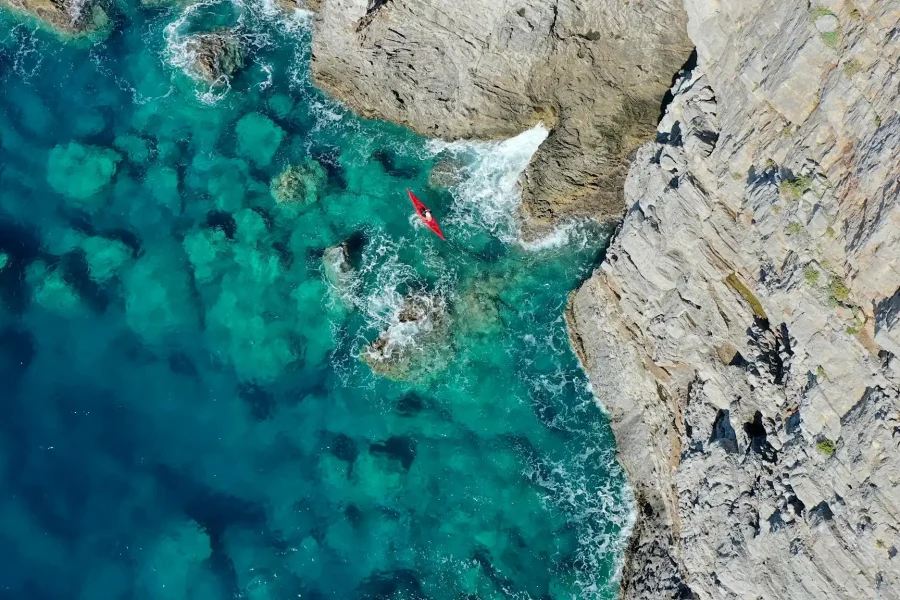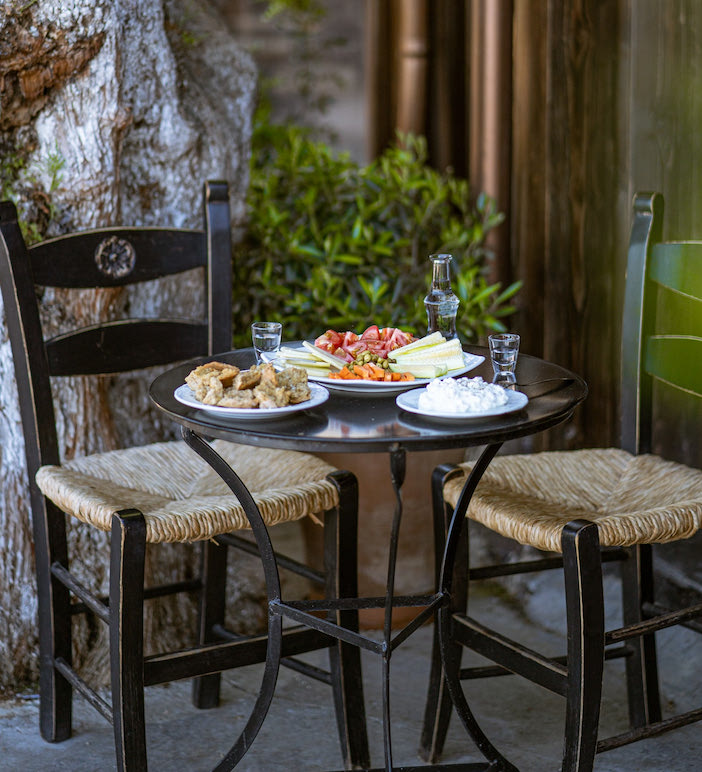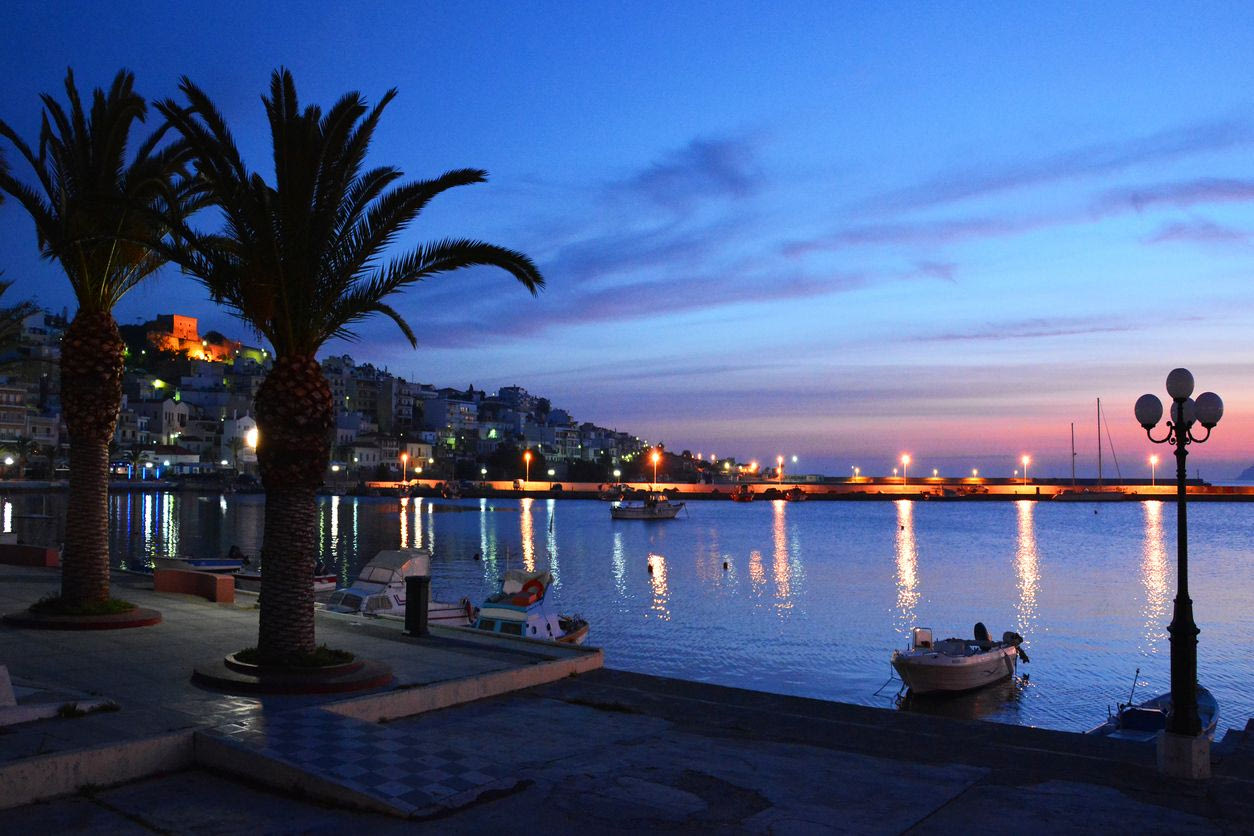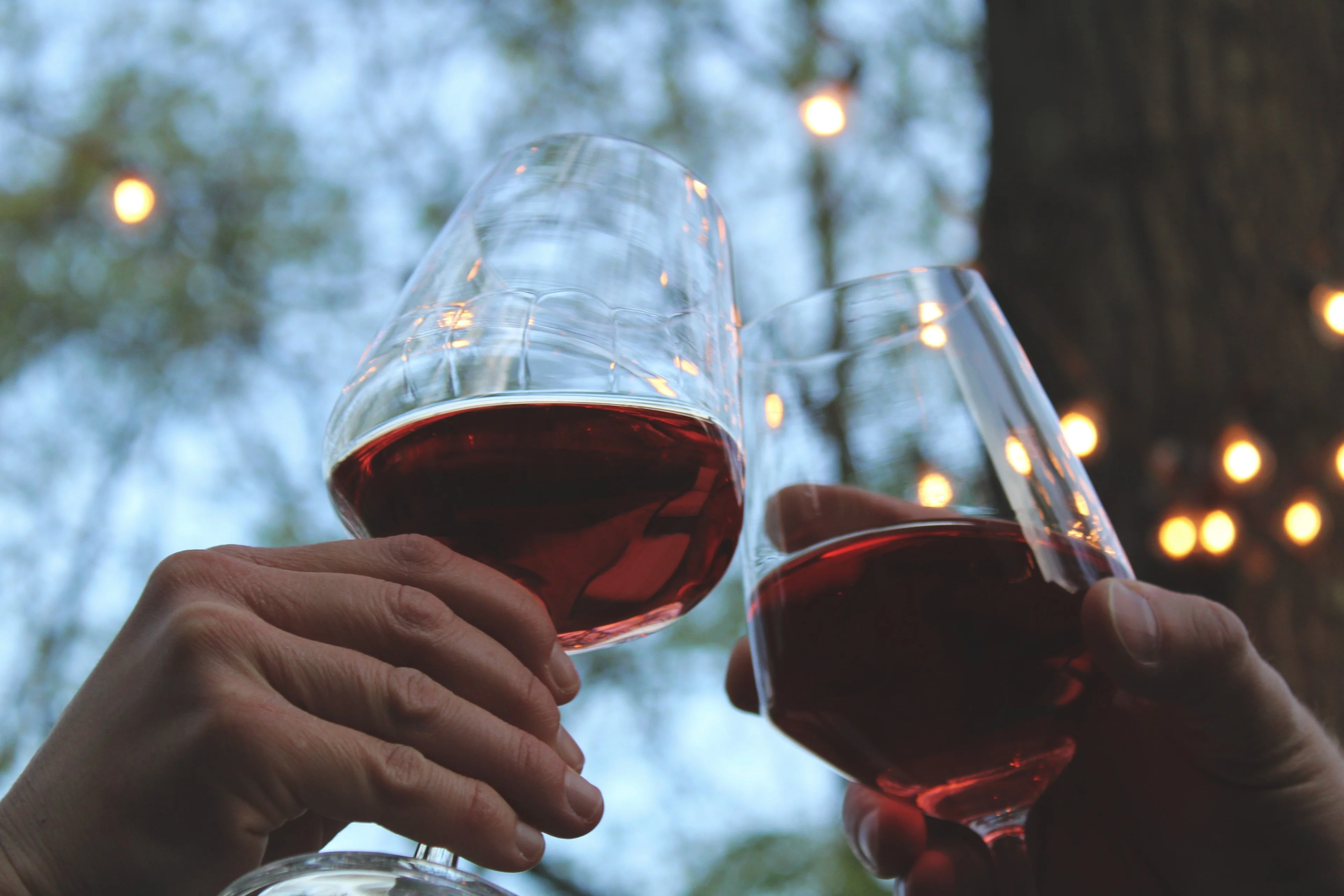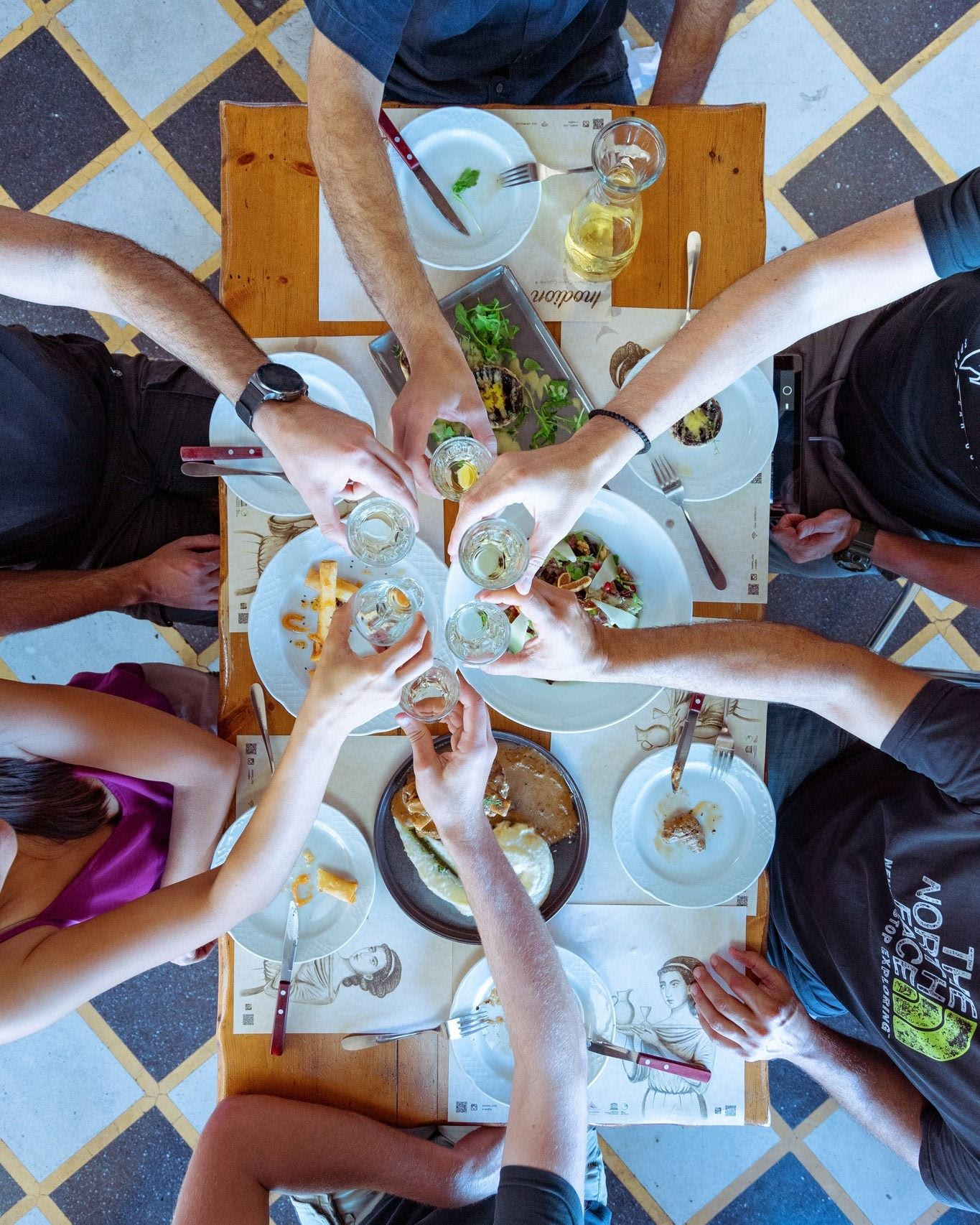Here are the highlights:
An Hour at a Traditional Kafeneio
Traditionally, the kafeneio was the meeting place for men to discuss politics, play backgammon, and share stories. These cafés are the heart and soul of life in Greek villages. A visit to one should be on the list of anyone wanting to experience a slice of everyday life in Greece.
The best ones are located in mountain villages, far from the touristy coastal areas. Here, you’ll need to know a little Greek—or be prepared to use sign language—to order raki, fava bean purée, Cretan rusks called dakos, and other local delicacies.
Discover the Wild Side of Crete
One of the wildest and least explored corners of Crete, the Sitia Geopark—recognized by UNESCO—offers a concentrated dose of the island’s best features. The area stretches from the 19th-century Sideros Lighthouse to the Minoan palace of Zakros and includes the high mountain villages of Ziros and Armenoi, the only palm forest in Europe at Vai, and the ancient ruins of Zakros.
The heart of this captivating region is the town of Sitia, which feels like it’s been frozen in the 1970s. It’s a great place to enjoy raki and soak in breathtaking sunset views.
Samaria Gorge
The largest gorge in Europe, stretching 10 miles between the White Mountains of Crete to Agia Roumeli on the coast, offers a challenging yet stunning hike.
Starting from Xyloskalo, the main entry point at an altitude of 1,230 meters, the rocky pine-lined path descends steeply past natural springs and offers distant views of the sea.
Follow the Wine Route
Once upon a time, Cretan wine was a blend of different barrels, costing little and tasting like mouthwash. But over the last decade, new winemakers have reinvented its image with impressive results.
Try some of the best wines along the Wine Route, which spans 40 miles from the outskirts of Heraklion to the archaeological site of Gortyna, where many of the region’s finest wineries are located.
Traditional Festivals (Panigyria)
Greek life revolves around panigyria, traditional festivals held in honor of different saints. While these may be religious celebrations, they’re anything but solemn. The festivals are lively affairs with spirited live music, where local meats, wine, tsipouro, or raki flow generously.


